In short its an engineered approach to making a board feel familiar to ride, have higher performance and greater durability than we are used to. The propietry manufacturing process involves several different fibers chosen for their technical properties and distributed to the desired flex/dampening positions. The boards are then glassed as a whole unit in one shot making sure the moleculer structure is integrally combined.
The Fibre or “GRID” Construction
Last modified on 2012-01-19 09:12:59 GMT. 0 comments. Top.

Many of our Dynocore™ fans ask about the fibre materials used on our amazing Durable construction. We use a large variety of materials combined in a scientific mix to attain the correct combination of Durability and Flex Dampening.
Ghost Carbon (innegra) is a newer Polypropolene material created to withstand high velocity impact. It also has the benefit of very neutral flex providing a high durability component without making the board stiff. Innegra is very difficult to work with like most Aramid fibres but in our unique propietry build process we want the benefits of the fibre so we made a way to work with it.
Biaxial Grid The deck grid is a unique fabric Created for our process. We also use Fibres placed in a 45 degree orientation between your feet to give dent resistance and flex control. Without this your board would begin to feel like a chattery import. Sandwiched between other fibres the grid adds a integral part of the Dynocore™ build.
Non-Woven Fibre Sandwich Composite construction surround you today in most modern building methods. from High Speed Bullet trains, A380 Jets and your local Buses. Sandwich composites provide a perfect place for the use of non-woven fibres to create low impact durability in localised areas.
Carbon Fibre Carbon’s intended properties in our structure is a stiffener. Creating a frame on part of the board and rail around your back foot. Thats where we want to engineer the ideal flex dampening.
Basalt Fibre A High tensile strength and dynamic tenacity 3 x stronger than steel add another fibre we like to use in our higher performance turbo models and high performance sprint models.
Surf9 Hexcel Fibreglass This one is THE 4oz (125 gr/m) preference used by professional board builders worldwide. its one of the only common materials used by the surf industry that we use in Dynocore™ construction. Hexcel Fabrics 1522 4oz fibreglass surfboard cloth suitable for all surf boards – a totally superior surfboard fibreglass cloth perfectly optically balanced and compatible with our Epoxy Resins.
How is the Foam Blank made for Dynocore™ boards?
Last modified on 2011-02-10 05:14:39 GMT. 0 comments. Top.
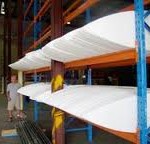
Styrene is composed of Benzene (liquid) and Ethylene (gas), both of which are petroleum products. EPS begins as a styrene monomer which goes through a process where the styrene monomers link into larger molecules called polystyrene. Expanded polystyrene or EPS foam is made from polystyrene pellets or beads that are puffed up with steam. The process is similar to cooking rice with steam. Usually a small amount (approx 4%-6%) pentane or another “blowing agent” is added to the hard polystyrene pellets to enable the expansion process. When these independent foam beads are in a mold they take the shape of the mold and hold that shape when they dry and cool down. The polystyrene beads grow to more than 40 times their original size and when the process is complete the usable EPS is about 95% air* which gives it features that are desired. Expanded polystyrene is a rigid, insulating, light weight, and biologically friendly foam. The foam we use for the Dynocore™ project is made specifically for surfboards right here in Brisbane. I have known the guys there since they were a startup company. Its nice to work with guys who are passionate about making better products too!

Surfboard Variables part 1
Last modified on 2011-02-09 10:38:29 GMT. 0 comments. Top.
Well Since this is the Dynocore™ source of information had better give you some…
One of the things that i have learned over the years is the crazy amount of variables in Surfboards, From the shape right thru to the construction methods and materials. I see old school shapers who have perfected the art of making a particular board they like again and again without using a machine.. true artisans. However each board they make still has so many variables beyond control of the maker, we find that each board still surfs differently.
What are these variables that are not shape dependant?
1- The PU (polyurethane ) foam we normally use to make boards is hand mixed, each and every blank. Putting the blanks formulation completely open to the human mixing it, the weather and the current batch of chemicals he has on hand.
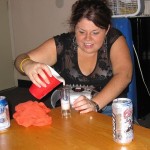
2- The Stringer, thats right that little strip of wood down the middle started as an organic tree, the spring or flex in your stringer is open or controlled by what kind of wood it is, the location and conditions the tree grew in, the cut of the timber it was taken from… etc etc.
3- The day/conditions your board was glassed in. Yes the polyester resin commonly used making everyday surfboards is open to a large range of variables. the temperature controls the amount of catalyst we use along with the skill set of the human laminators squeegee techniques and current mindset.
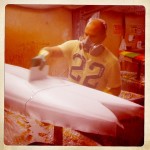
These are the basic common issues we have trying to duplicate magic boards. These issues are nothing to do with the shape of the board.
One of my challenges in the Dynocore™ project is to eliminate what i can of these variables… next post i will share what im doing to counter these issues…
Surfboard Variables part 2
Last modified on 2011-02-11 10:54:32 GMT. 0 comments. Top.
So i want to talk about those nasty variables in surfboards again, The ones that are not shape dependant. in an earlier post i listed 3 things that i have found to be the major culprits. they were The PU foam blank, The wooden Stringer and The physical environment your board was made in, ie: the Chemical element and the weather conditions.
Heres how i have created a workaround for the Dynocore™ project to eliminate these to the best of my ability.
1- The BLANK.

We use EPS foam specifically made for surfboards. The manufacturing process for EPS (commonly but misleadingly called epoxy foam) is very exacting. the Polystyrene beads are measured to the 100th of a gram and puffed up with just the perfect temperature steam in a close tolerance surfboard shaped mould. All computer & robot stuff. Guaranteeing the perfect density each & every time! As a integral core component of our surfboards, Consistancy is critical.. Constant memory and reflex is achieved in the blank allowing us to use shape and/or glassing methods to integrate flex patterns.
2- The Stringer.
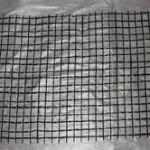
Normally wood from any tree with no control over each piece.. We dont use a stringer. Yep its stronger without a stringer.. no bull. One of the things that normally create stiffness in the common surfboard is also the thing that holds you back from getting the magic feelings in your next board. Using carbon, Basalt, Innegra and other tech fibres allow us to integrate the flex and stiffness we want in the build of your board. We can put these fibres in again in your next board to get the same feelings, or in a different configuration in your next board to make it react differently. So No Stringer = Consistent Flex.
3- The Chemical & manufacturing Environment.
Epoxy resin is a amazing creation and a crazy science. There is literally hundreds of formulations of epoxy resin. only a few are good for surfboards. I have only found one that has the brightness and stays clear for a very long time. Australian made too. he resin is exacting in its mixes and only works if you get the ratio correct. Do it wrong and the board does not make it out of the glassing room. It becomes a pile of goop in the bin. Temperature varies how long it takes to get thick and go hard. We have air conditioned glassing rooms and board ovens to control that. To get a result with this epoxy is a simple process of measuring the perfect amounts with scales and applying it to the board. consistency… same hardness, same strength, same color every time. Bonus… Epoxy is way more flexible than old school polyester resin with added toughness too.
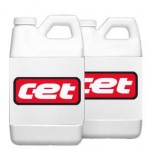
I would like to thank and praise those “much crazier than me” inventor guys who dabble for years to perfect the mixes of these chemical components i use to make your board. Without them my continuing search for the amazing magic board would have been fruitless. Now its time for you to benefit from these technologies.

Grant Dwyer
November 28, 2013 at 4:16 pmDave,keep thinking outside the box. because the rest don’t. regards grant. fandango surf .